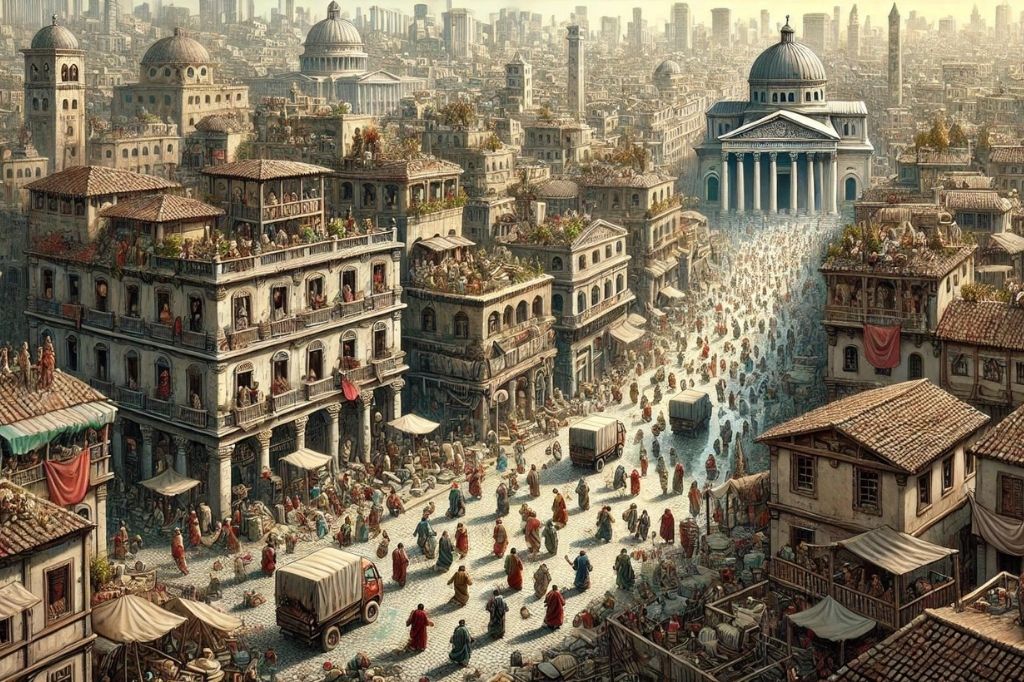From the beginning of time, epidemics play had a crucial impact in molding the urban scenes and cultural designs of ancient cities. From the sicknesses of Athens to the Dark Demise in middle age Europe, these broad illnesses have provoked tremendous changes in city arranging, general wellbeing strategies, and normal practices. This article digs into the Historical Impact of Epidemics on Urban Development in Ancient Cities, investigating how these horrendous occasions prompted persevering through changes in urban conditions.
The Plague of Athens and the Fall of a Civilization
In 430 BCE, the Plague of Athens struck the city-state during the second year of the Peloponnesian Conflict, killing an expected 33% of its populace. This pandemic crushed Athens’ tactical capacities as well as carried significant changes to its urban and social designs.
Social cohesion disintegrated as individuals dreaded public spaces and get-togethers, prompting a decrease in metro cooperation and the breakdown of normal practices. The sickness’ widespread spread was exacerbated by Athens’ thick urban climate, which was not initially intended to deal with such a general wellbeing emergency.
This appalling occasion constrained Athenian pioneers to reexamine the plan of their city. Post-pestilence, there were endeavors to further develop sterilization and decrease packing by spreading the populace all the more uniformly and growing neighborhoods. These progressions denoted probably the earliest contemplations of urban arranging standards because of general wellbeing needs.
Antonine Plague and the Change of Roman Urban Life
The Antonine Plague, which assaulted the Roman Realm from 165 to 180 Promotion, is one more perfect representation of how a scourge can impact urban development. Accepted to have been brought back by troopers getting back from crusades in the Close to East, this plague killed millions, fundamentally debilitating the Roman Domain.
The flare-up prompted boundless work deficiencies, provoking urban organizers and pioneers to reconsider city designs and work allotments. Roman architecture and urban arranging saw shifts towards more independent local area plans, consolidating better water supply frameworks and greater public showers, which were accepted to advance cleanliness and wellbeing.
Moreover, the Antonine Plague sped up the development of the Roman street framework, as the requirement for proficient correspondence and transport of merchandise became basic in overseeing and answering the pestilence dangers.
Impact of the Justinian Plague on Byzantine Cities
The Justinian Plague of the sixth century horrendous affected the Byzantine Realm, prompting long haul monetary and segment changes in its cities. This plague provoked huge urban flight, with numerous city occupants moving to provincial regions to get away from the virus, which prompted a decrease in urban populaces and a revamping of urban scenes.
Accordingly, Byzantine specialists executed one of the primary realized quarantine measures, restricting development into and out of impacted regions. Urban planning during and after the Justinian Plague zeroed in on improving clean framework. Developments included better sewer frameworks and stricter urban guidelines in regards to squander the executives and road tidiness, which were pointed toward forestalling future episodes.
These actions not just aided in controlling the spread of sicknesses yet in addition set trends for general wellbeing approaches in urban settings, featuring the significance of administrative mediation in overseeing wellbeing emergencies.
Lessons from Epidemics: Ancient Bits of knowledge for Present day Times
The historical impact of epidemics on the development of ancient cities gives significant illustrations to current urban preparation and general wellbeing systems. Understanding how ancient human advancements answered such emergencies can offer experiences into viable ways of coordinating wellbeing contemplations into contemporary urban preparation.
Public wellbeing infrastructure, including water supply, sterilization, and waste administration, was pivotal in changing ancient cities post-pestilence. Additionally, the present cities can profit from focusing on these angles to forestall infection flare-ups as well as improve the general nature of urban life.
Moreover, the ancient act of carrying out isolation measures and directing urban thickness has current equals in drafting regulations and urban plan methodologies that can assist with relieving the spread of sicknesses in urban environments.
As we keep on confronting worldwide wellbeing challenges, the illustrations from ancient epidemics remain ever important, directing us towards more brilliant, better, and more supportable urban fates.


